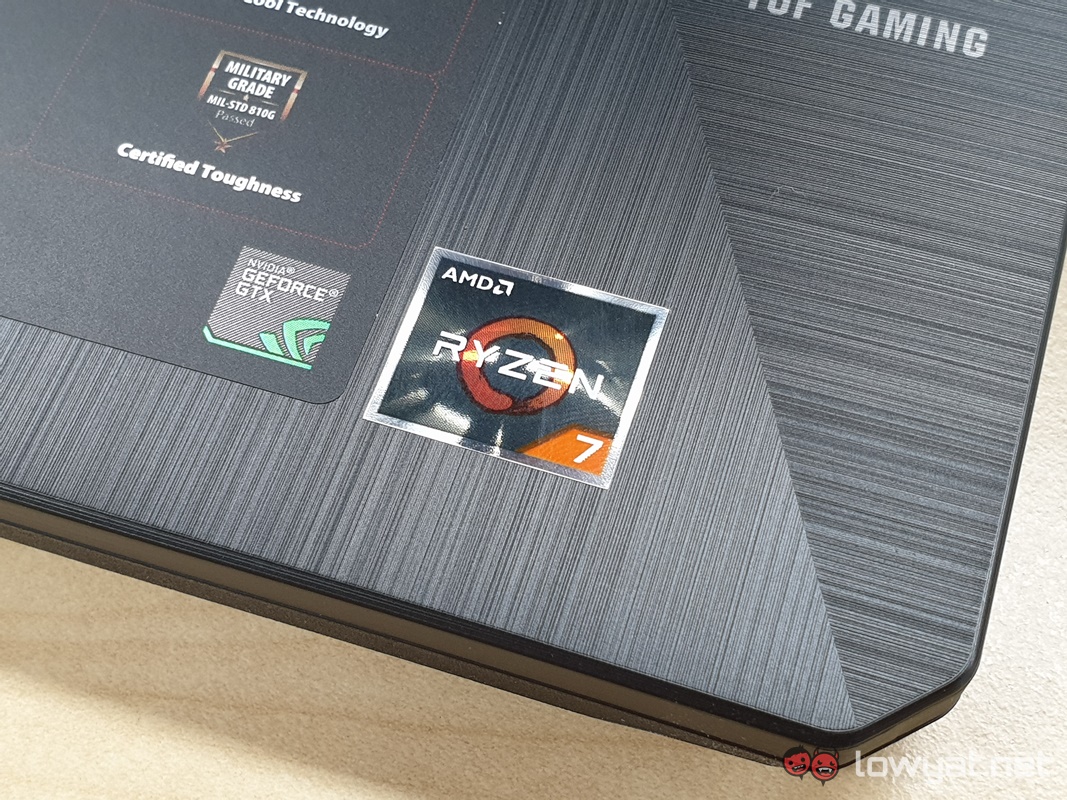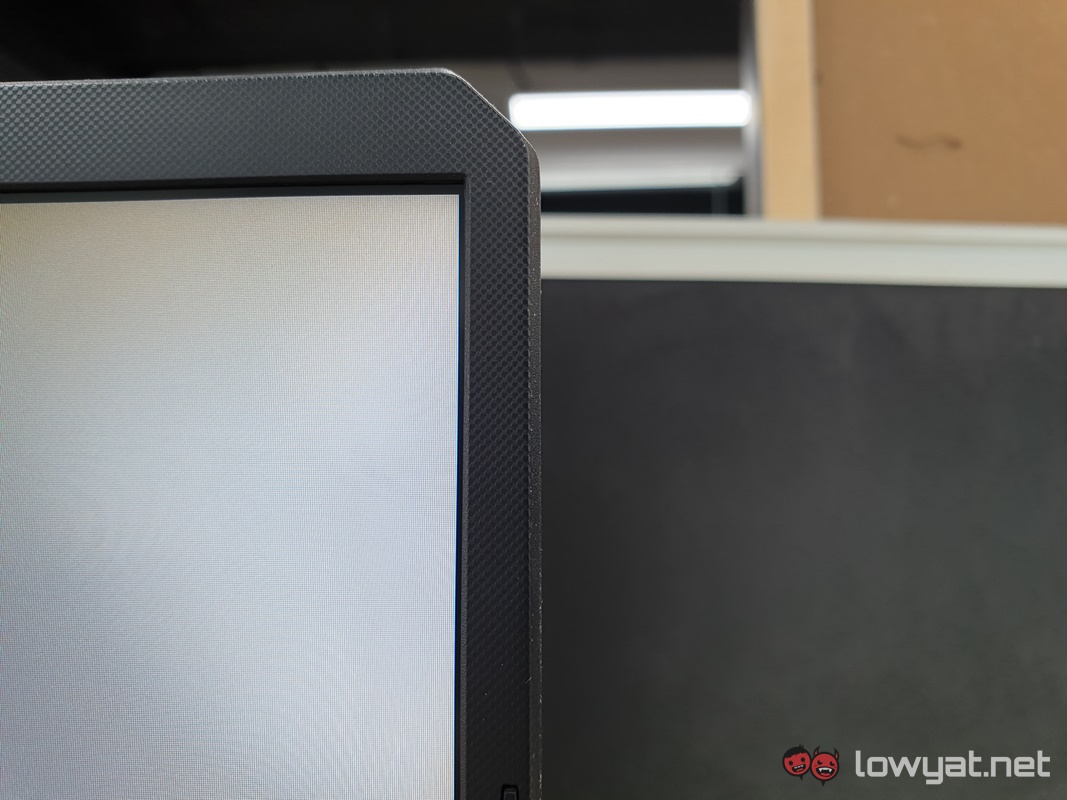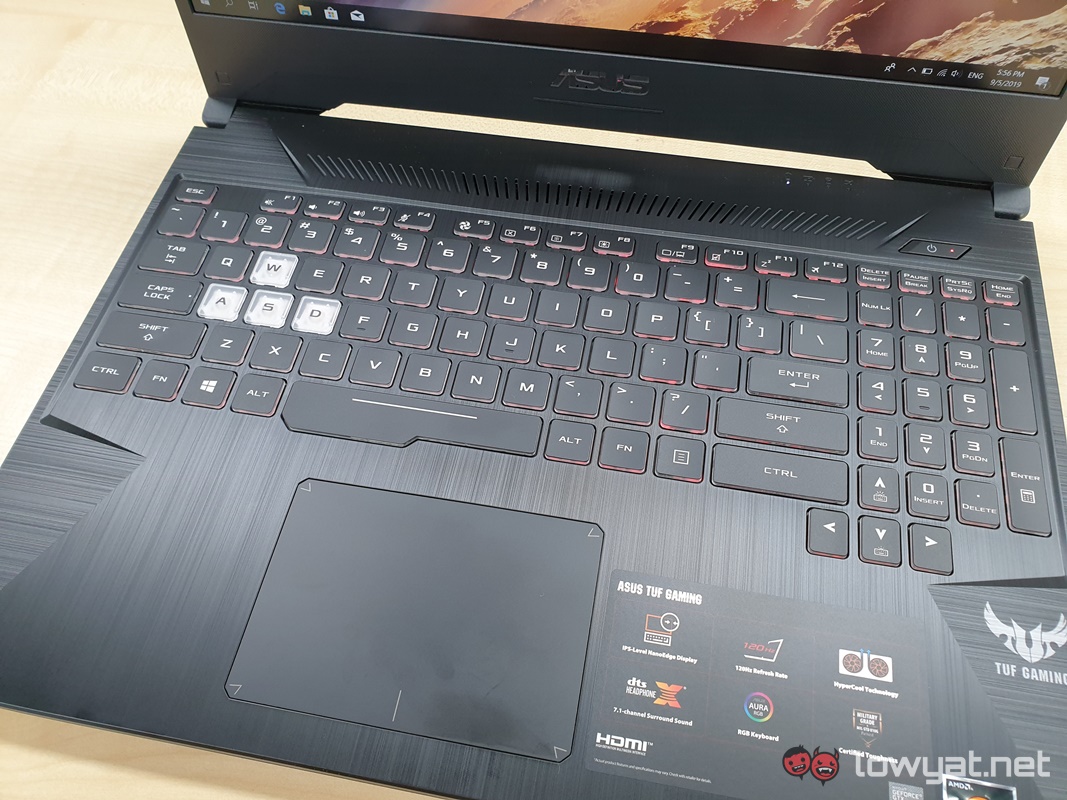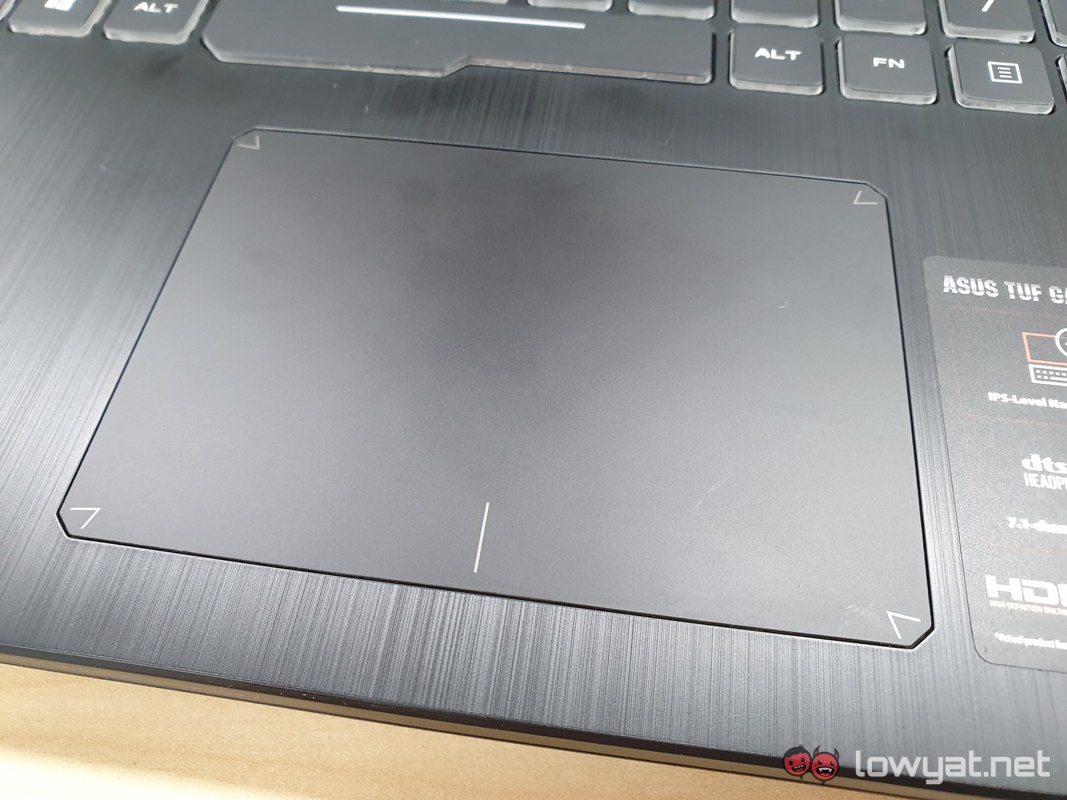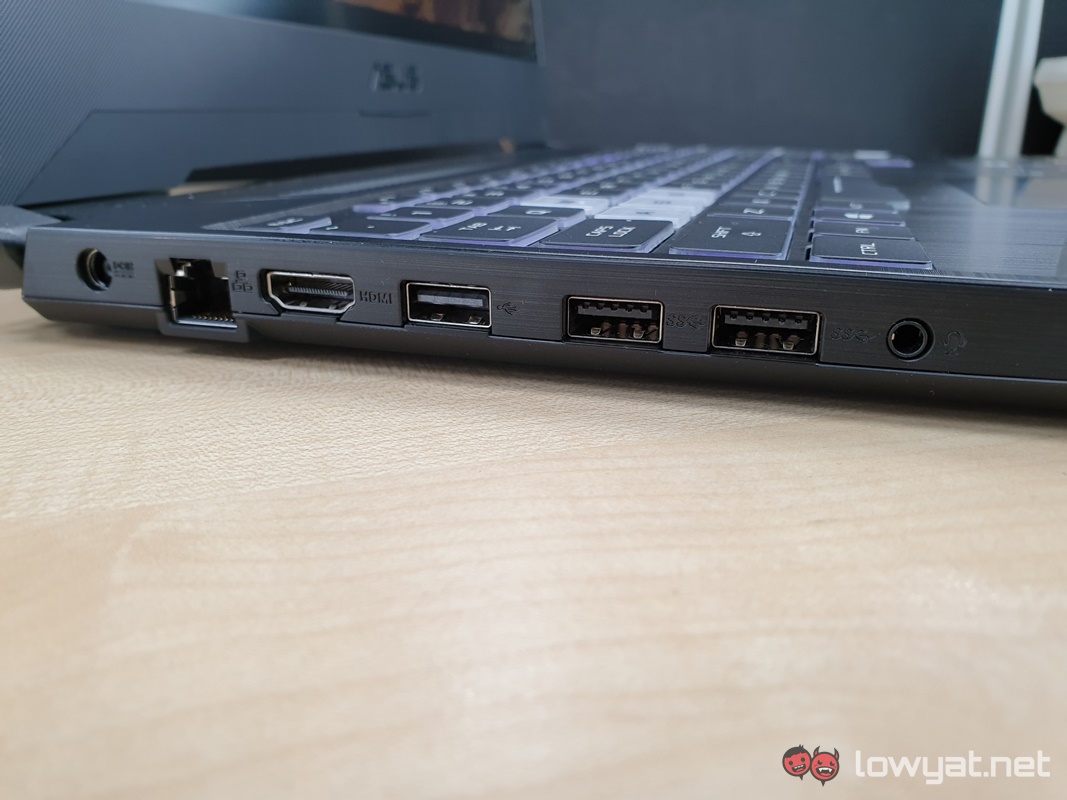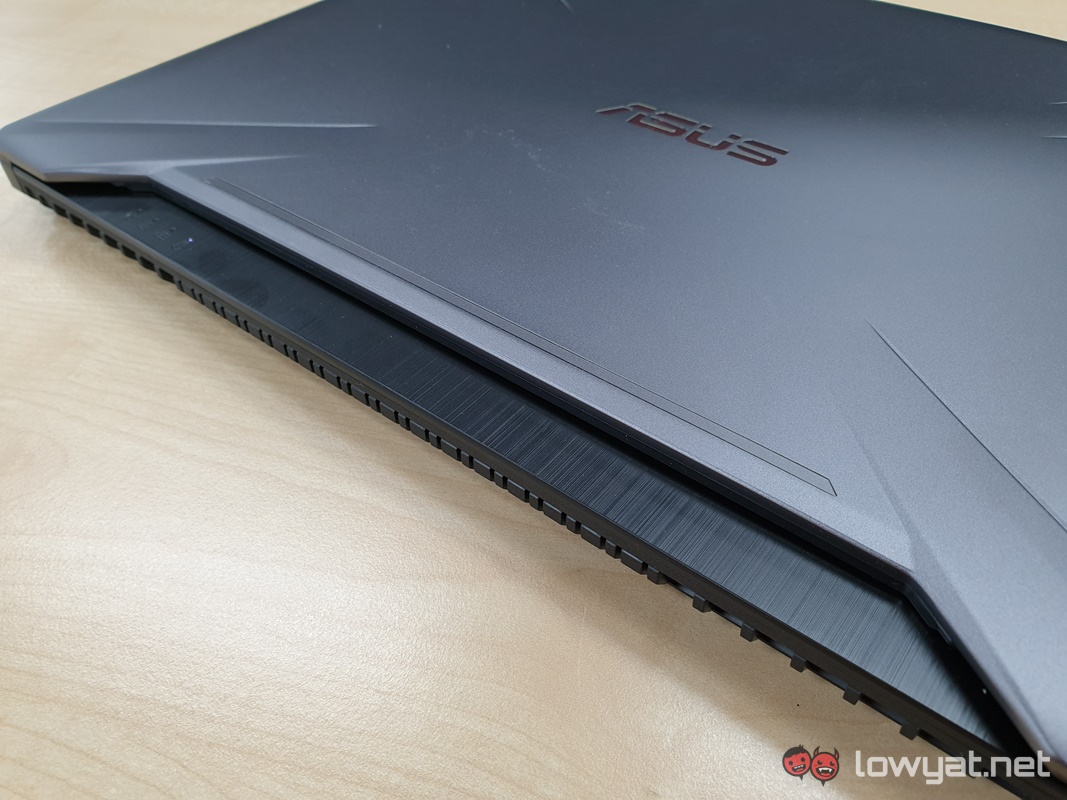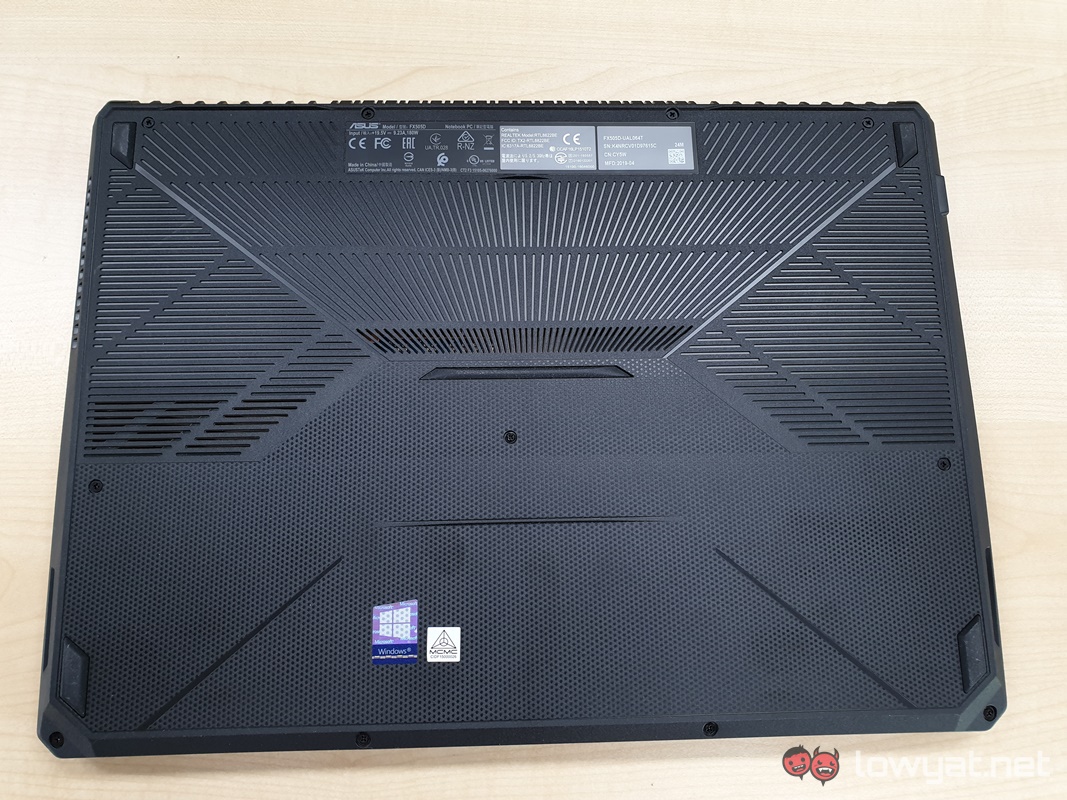Fast forward to today, and ASUS has decidedly brought about a reunion of the two brands in the form of its TUF FX505D gaming notebook. And the brand does so by combining AMD’s Ryzen mobile CPU solution with NVIDIA’s recently released Turing-powered GeForce mobile GPUs. On that note, let’s begin by talking about the notebook’s specifications. The FX505D in my hands houses a Ryzen 7 3750H CPU, and an NVIDIA GeForce GTX 1660 Ti mobile graphics. For the record, this is just one of the three Ryzen 7 variants, and that the highest configuration of the FX505D actually comes fitted with an RTX 2060.
At its highest configuration, the FX505D comes with a single 8GB DDR4 RAM stick running at a frequency of 2666MHz, plus an additional slot for memory expansion. I find this memory option to be a bit peculiar; considering the price for RAM has been on a steady decline, I wonder why ASUS doesn’t just take this opportunity to populate both RAM slots and give its consumers a bare minimum of 16GB DDR4 RAM. Storage on the FX505D is settled via a 512GB NVMe PCIe M.2 SSD, and there’s even an additional SATA slot for when you wish to increase your storage. Having said, I would’ve preferred ASUS to have provided a more conventional SSD and HDD combo for the machine. It’s a more sensible configuration, especially since I only install one or two of my most frequently played titles on the SSD and the rest on the secondary storage.
Like its predecessor, the display of the FX505D is a thin bezel, 15.6-inch Full HD IPS panel. The unit I have comes with a maximum display refresh rate of 120Hz, although it should be noted that this option is only available on the SKU running on the RTX 2060. To that end, the FX505D is, aesthetically, a carbon copy of the original a FX505 notebook. It still sports the same chunky, angular cut chassis, but it’s also surprisingly light.
It still employs the dual-hinge, floating display that exposes the spine of the notebook. Even the limited numbers of ports are the same; in total, you get three USB ports, a RJ45 LAN port, one HDMI output port, a 3.5mm headphone and microphone combo jack, and nothing more. Again, like its predecessor, the FX505D is devoid of an SD card reader.
Moving on, ASUS has managed to squeeze a full-size RGB keyboard into the FX505D, although the directional keys at the bottom right of the base feel a bit awkward for me. At times, I found myself pressing the “up” key instead of the Ctrl key (Yes, I use the right Ctrl key sometimes). Speaking of RGB, the keys don’t have per-key RGB, but they are still customisable via ASUS’s Aura Sync RGB software. Lastly, the FX505D is powered by 48WHrs, 3-cell Li-ion battery. My initial impressions about the notebook’s battery life is fairly optimistic; Upon starting it up for the first time, the notebook’s battery had 69% on it. On its default battery mode, I got close to four hours of surfing the internet and watching videos on it.
Performance on the FX505D is snappy, thanks in no small part to the on-board NVMe SSD. Sadly, I can’t delve too much into detail for now, as I’ve yet to properly run the usual benchmarks and other tests on it. ASUS also hasn’t divulged the official starting price for the FX505D, but that bit of information will actually be revealed later this month. In the meantime, look out for our full review over the coming weeks.
